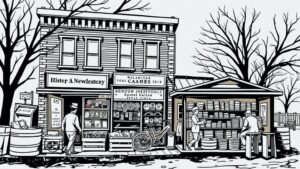Understanding Hidden Coordinates in Maps With Folded Corners or Stains
Understanding Hidden Coordinates in Maps With Folded Corners or Stains
Maps have served as essential tools for navigation and exploration throughout history. While many users rely on digital maps today, physical maps are still widely used, especially in specific fields such as archaeology, geology, and certain forms of research. These physical maps, however, can present unique challenges, particularly when they exhibit folded corners or stains that obscure critical information, including hidden coordinates.
The Importance of Coordinates in Cartography
Coordinates are fundamental to cartography, acting as the geographical address of a specific location. Coordinate systems, such as latitude and longitude, allow users to pinpoint exact locations on the Earths surface. Understanding these systems is crucial for various applications including navigation, urban planning, and environmental monitoring.
- Latitude: Measures how far north or south a point is from the Equator.
- Longitude: Measures how far east or west a point is from the Prime Meridian.
The accuracy of these coordinates is directly influenced by the quality of the map and any alterations it has undergone, including physical damage like stains or folds.
Effects of Folds and Stains on Map Interpretation
When maps are subjected to wear and tear–especially in the form of folds and stains–their usability can be significantly compromised. This can lead to several issues for the user:
- Obscured text and numerical values.
- Altered visual cues that mislead interpretation.
- Difficulty in identifying precise coordinates, especially in critical contexts.
For example, an archaeological field map with a corner that has been folded might hide vital information, such as survey markers. If these coordinates were to be cited at a later stage, their absence could lead to misinterpretation of excavation sites.
Identifying Hidden Coordinates
To effectively identify hidden coordinates on compromised maps, users can employ several techniques, including:
- Photographic Enhancement: Taking high-resolution images of the map and using editing software to enhance readability, thus revealing obscured text.
- Cross-Referencing: Comparing the damaged map with an unaltered version to recover hidden data by matching known coordinates or landmarks.
- Transcription and Reproduction: If a map contains critical information that remains indecipherable, skilled cartographers can transcribe the visible portions and make educated guesses on the concealed data.
Case Study: The Restoration of Historical Maps
A noteworthy example of rectifying the problems created by folded corners and stains can be seen in the restoration of historical maps in libraries. Institutions like the Library of Congress have employed advanced imaging techniques to restore maps from damaged collections.
In one case involving a 19th-century map of the American West, conservators utilized infrared imaging to uncover annotations obscured by age-related stains. They were able to recover critical topographical information that had been previously lost, enhancing the maps value for study and research.
Real-World Applications of Assessing Hidden Coordinates
Understanding hidden coordinates in maps with damages has crucial applications across several fields:
- Environmental Sciences: Accurate geographical data is essential for tracking wildlife movement and habitat restoration efforts.
- Urban Planning: City planners rely on detailed maps to make informed decisions about land use and infrastructure development.
- Historical Research: Accurate analyses of past events depend on reliable geographic data, showcasing changes over time.
Conclusion: Actionable Takeaways
Maps serve as invaluable resources; however, their usability can diminish with damage such as folds or stains. To mitigate these challenges, users should:
- Use imaging software to enhance damaged areas.
- Cross-reference damaged maps with reliable sources.
- Seek professional help for map restoration to preserve historical data.
By employing these strategies, users can recover hidden coordinates and ensure that their maps retain their full informational value, allowing for accurate navigational and interpretive tasks.



